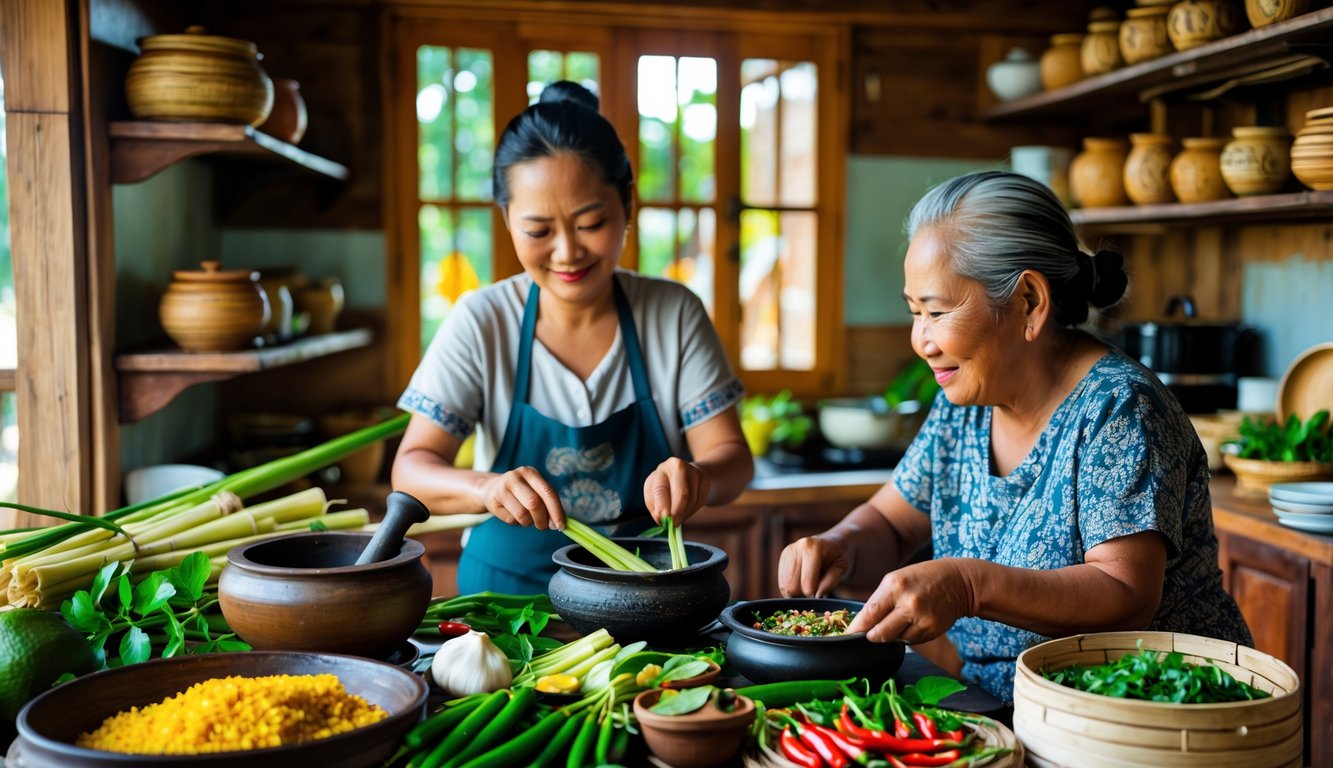
Signature Main Dishes Beloved by Thai Home Cooks
Right now I’m elbow-deep in basil leaves and just want to say: this isn’t about street market drama or fancy hotel food. If you can’t get the ingredients from the sketchiest wet market or the guy on a scooter, you’re probably not eating what my aunties call “real food.” And if someone tells you “authentic Thai” just means more chili, they’re probably bored, or just showing off.
Pad Thai the Traditional Way
Pad Thai—don’t roll your eyes—isn’t just that sweet-sour noodle pile from airport food courts. The real “traditional” version is so stripped down it almost feels like something’s missing. Not talking about ketchup or whatever weird things tourists add. Real recipes use palm sugar, fish sauce, and dried shrimp.
Crushed peanuts? Sure, but my uncle says they’re only for kids’ tables. Lime wedges are do-or-die—if you skip lime, grandma says you’re just eating Chinese noodles. No tofu overload or giant prawns in the originals. If you see eggs, tiny dried shrimp, chives, and pickled radish, you’re probably doing it right.
Everything fries over high heat in some battered wok, which gives it that chewy bite nobody ever mentions. The spicy part? That’s for the table, not the pan. I asked a neighbor who’s been cooking for thirty years, and she just laughed: “Pad Thai is about balance, not burning your mouth off.”
Tom Yum and Tom Kha Gai
You ever notice how everyone expects Tom Yum Soup to blast your face off? Like, “oh, it’s gotta be nuclear.” Nah. Real Tom Yum at home is never that. Lemongrass everywhere, galangal, kaffir lime, but it’s mellow, kind of earthy, with those straw mushrooms that always taste like… well, mushrooms. And then some uncle yells if you dump in all the fish sauce at once—“layer the sour, don’t drown it!” (Ian Kittichai said so, but my aunt said it first, I swear.)
Tom Kha Gai—honestly, that’s the soup I crave when I’m sick or just done with the world. Coconut milk, galangal (don’t even try skipping it in my family), and some random mushrooms from the market. Chicken thighs only, or apparently the ancestors curse your rice. I forget the lime half the time, nobody complains, but I know they notice.
Customize all you want, but swap tamarind for lemon juice and you’re not in Thailand anymore. Tried Knorr cubes once—never again, got the kind of look that makes you rethink your life choices.
Thai Green Curry and Red Curry
I asked why my cousin’s green curry looked like a vegetable graveyard. “Whatever’s dying in the fridge,” she shrugged, spoon dripping coconut cream. Green curry (gaeng keow wan) isn’t about heat, it’s about that basil-sweet, eggplant-funky, fish sauce stink. Every family’s chili ratio is a secret or maybe just chaos.
Red curry, gaeng phet, always gets second billing, but man, the pounding of curry paste—never a blender, unless you want to get yelled at—makes it. More dried chilies, so it’s earthier, not just “hot.” And the protein? Whatever’s left over. Pork belly, tofu, chicken, doesn’t matter.
Pro tip: split your coconut milk—first half goes in till it “cracks” and gets oily, then the rest. Curry paste brands? Mae Ploy everywhere, but nobody admits it. And if it’s neon red, someone got lazy or distracted.
Unchanged Massaman Curry
Massaman’s the stubborn grandparent of Thai curries. Muslim roots, don’t let anyone pretend otherwise. It’s slow, brown, coconutty, with potatoes, onions, beef or chicken thighs, peanuts, tamarind, and those sweet Thai shallots. My grandma always calls it “cold day curry” and dunks leftover roti in it. Sometimes crispy rice at the bottom, sometimes not.
Homemade Massaman? Slightly oily top, never tastes like cinnamon gum (unless you went wild with store paste). My aunt always adds fish sauce and palm sugar, even if the recipe’s right in front of her. Bay leaves are always imported—no one knows why, but apparently it’s fine.
It’s not about the recipe. It’s about “three hours, now it’s Massaman.” Pots go back and forth, everyone argues, and if you see pineapple in the pot, just pretend you didn’t.
Steaming and Stir-Fry: Cornerstones of Authentic Thai Cooking
Lost count of how many people Google “easy Thai recipes” and end up with a sad stir-fry that tastes like nothing I’ve ever eaten in Thailand. There’s an actual rhythm to a wok—nobody talks about it, but you know when you see it. Steaming isn’t just “heat food, make soft.” It’s some weird dance of timing, layers, and stubbornness. Yet, I still see rice noodles glued together on Instagram, like, why bother?
Classic Pad See Ew and Pad Woon
Pad See Ew nearly broke me. Rice noodles stick to everything if you blink wrong. The trick? It’s not the oil, it’s the mix of light and dark soy, and you gotta toss it fast with Chinese broccoli. Skip that, and you get eye rolls from every Thai home cook.
Pad Woon—nobody ever talks about it, but it’s just glass noodles and eggs, tossed so fast the eggs disappear. Wok hei is real, even at home, unless you crowd the pan (don’t). Oh, and don’t soak noodles too long—learned that the hard way. Mush.
Honestly, these dishes are about texture. Overcook one noodle and you’re eating baby food. Not the vibe.
Traditional Stir-Fries: Cashew Chicken and Thai Basil Chicken
Every time someone dumps Italian basil into Pad Kra Pao, I want to scream. Holy basil is the soul, not a garnish. Bell peppers? Nope. Chili flakes? Just grab a handful and hope for the best—no one’s measuring.
Cashew Chicken is supposed to be a Chiang Mai thing, not a sugar bomb. A bit of sugar, sure, but it’s about soy, fish sauce, and fresh roasted cashews (never peanuts, Tam would kill me). Don’t let the wok smoke like a cremation—just enough heat.
Most home cooks ruin these by being too careful. Panic-frying is a thing. The one time I nailed it, I was starving and just cranked the gas. Perfect.
Mastering Steaming Techniques at Home
Bamboo steamers everywhere, nobody uses them. Steaming Thai-style means food stays whole, not soggy. Fish? Over bubbling water, ginger, soy, tight lid. Don’t drown it. I made that mistake—ended up with puddles, not dinner.
Mahidol University says steaming keeps more vitamins than boiling—like, a lot more. Kids don’t care, but the texture is worth it. Never skip fresh herbs. Ever.
Oven? Nope. Microwave? Please. If you’re desperate, stick a bowl on chopsticks in your rice cooker over water. It’s hacky, but it works. Grandma’s not fooled, but whatever.



